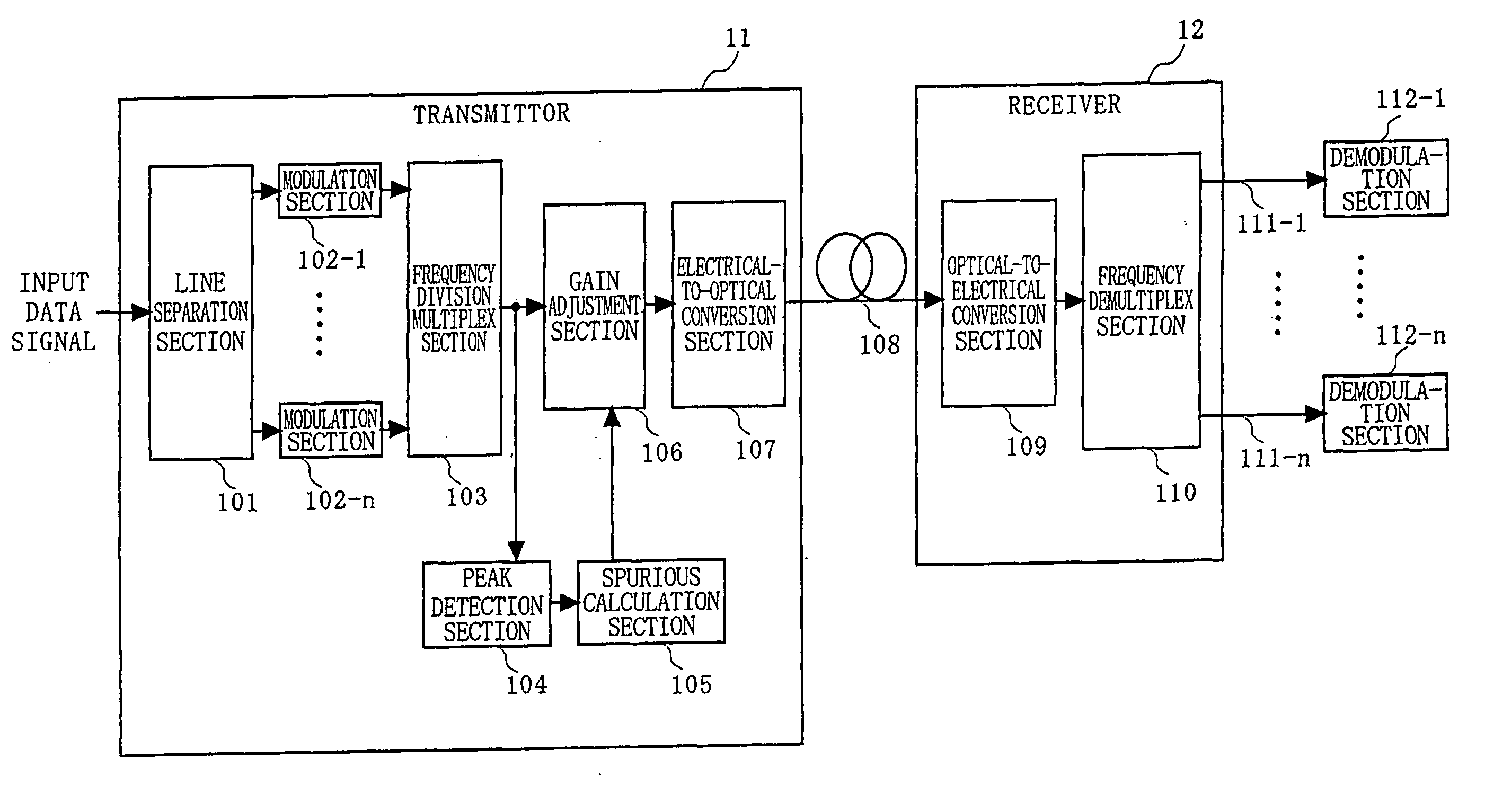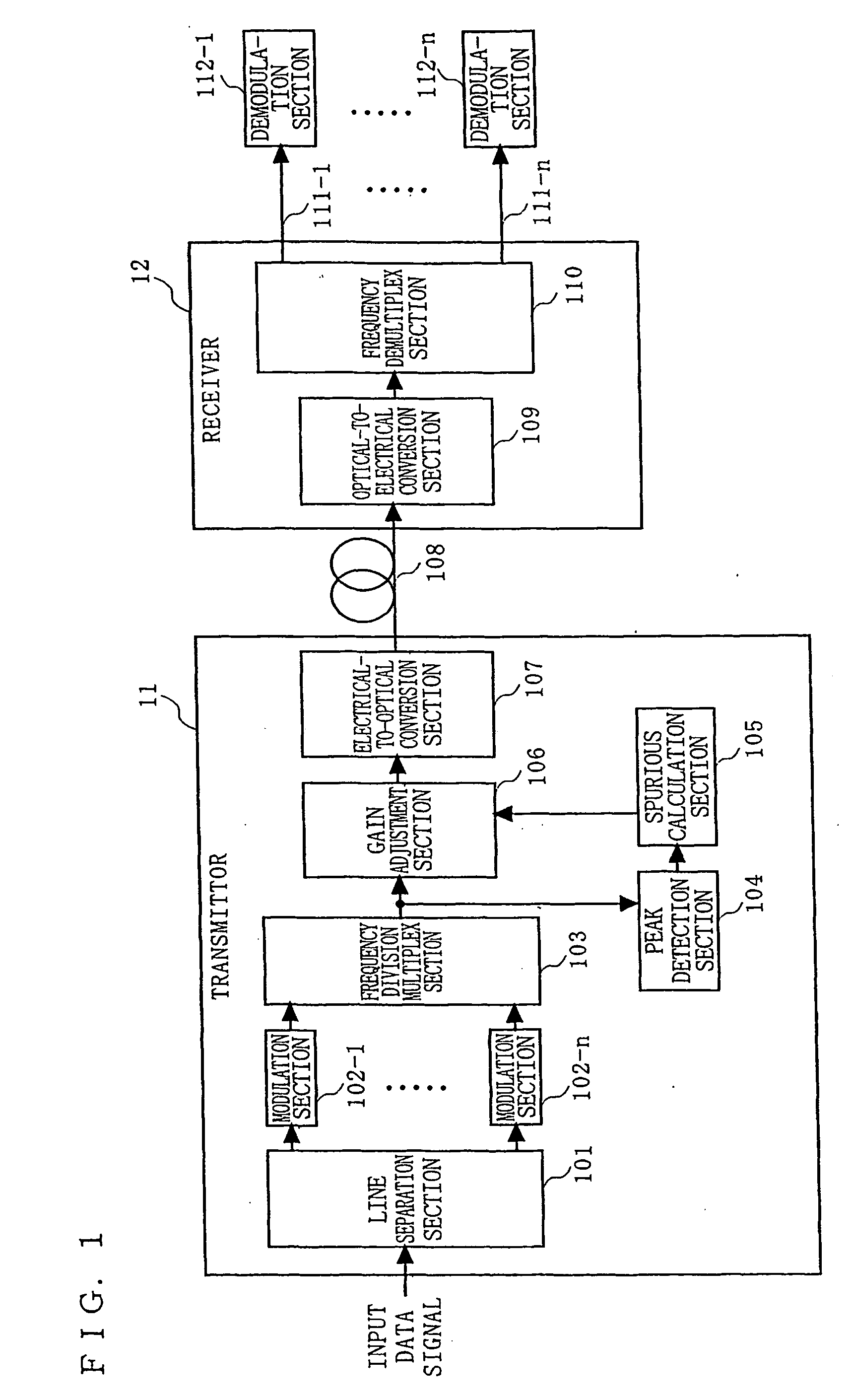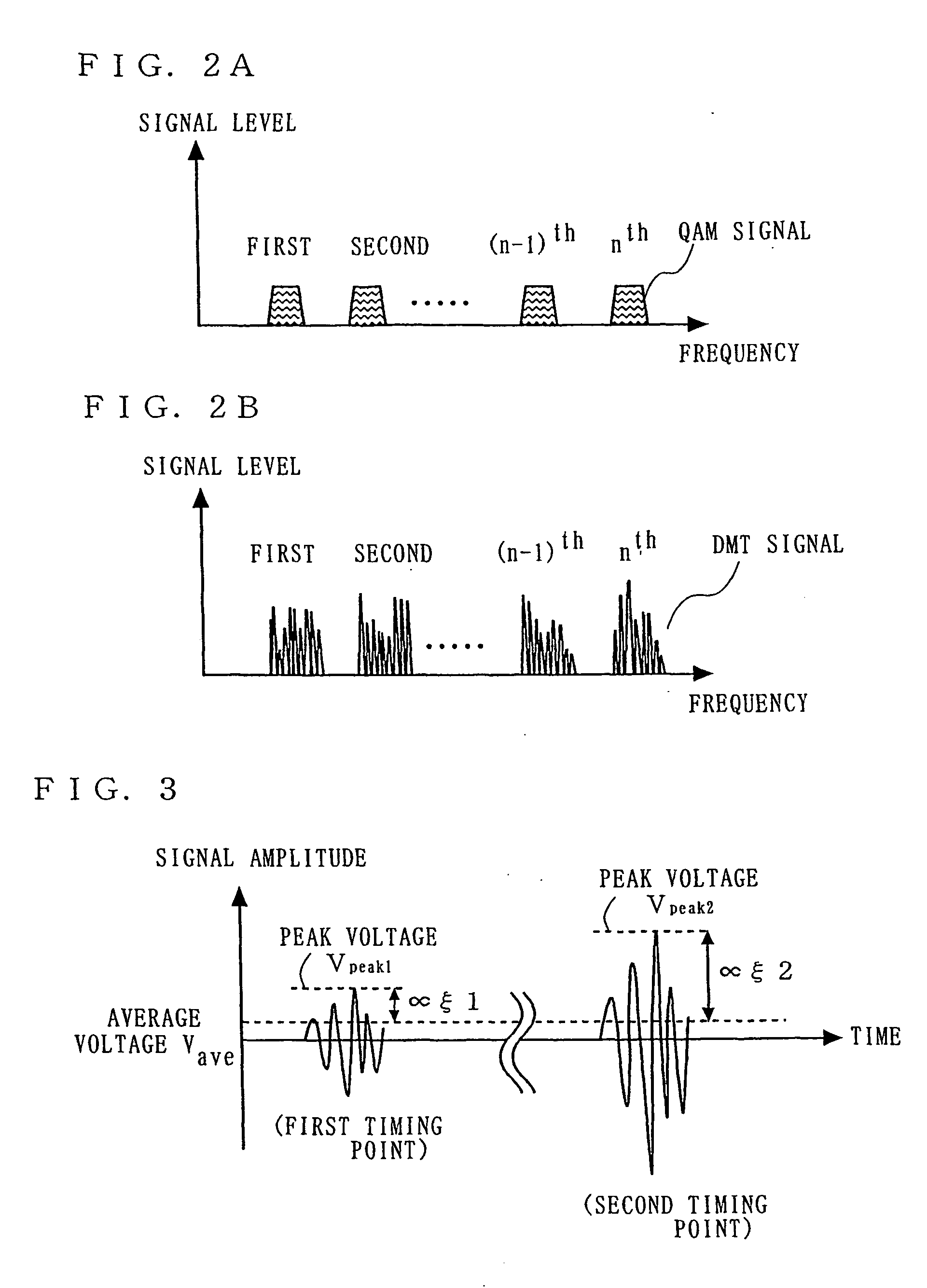Optical transmission system, and trasmitter, receiver and signal level adjustment method for use therein
a transmission system and optical terminal technology, applied in the field of optical transmission systems, can solve the problems of increased size increased equipment costs, and increased costs of optical terminal devices b>802/b>
- Summary
- Abstract
- Description
- Claims
- Application Information
AI Technical Summary
Benefits of technology
Problems solved by technology
Method used
Image
Examples
first embodiment
[0069]FIG. 1 is a block diagram illustrating the structure of an optical transmission system according to a first embodiment of the present invention. In FIG. 1, the optical transmission system comprises a transmitter 11, a first optical transmission path 108, a receiver 12, first to nth subscriber lines 111-1 to 111-n, and first to nth demodulation sections (terminal devices) 112-1 to 112-n. Herein, it is assumed that n is an integer which is equal to or greater than two.
[0070] The transmitter 11 is connected to the receiver 12 via the first optical transmission path 108. The transmitter 11 may be installed in a center office (CO) of a telephone company or the like, for example.
[0071] The receiver 12 may be installed in a common utility portion of a multi-dwelling unit (MDU), for example. The receiver 12 is connected to the first to nth demodulation sections 112-1 to 112-n, via the subscriber lines (first to nth subscriber lines 111-1 to 111-n), respectively.
[0072] The subscribe...
second embodiment
[0134]FIG. 13 is a block diagram illustrating the structure of an optical transmission system according to a second embodiment of the present invention. In FIG. 13, the optical transmission system comprises a transmitter 11a, a first optical transmission path 108, a second transmission path 108a, a receiver 12a, first to nth subscriber lines 111-1 to 111-n, and first to nth demodulation sections (terminal devices) 112-1 to 112-n. The transmitter 11a comprises a line separation section 101, first to nth modulation sections 102-1 to 102-n, a frequency division multiplex section 103, a gain adjustment section 106a, an electrical-to-optical conversion section 107, a peak detection section 104, and a spurious calculation section 105. The receiver 12a includes an optical-to-electrical conversion section 109, a frequency demultiplex section 110, a distortion monitoring section 113, and a distortion information transmission section 114.
[0135] The receiver 12a according to the second embodi...
third embodiment
[0143]FIG. 15 is a block diagram illustrating the structure of an optical transmission system according to a third embodiment of the present invention. In FIG. 15, the optical transmission system comprises a transmitter 11b, a first optical transmission path 108, a second transmission path 108a, a receiver 12b, first to nth subscriber lines 111-1 to 111-n, first to nth demodulation sections 112-1 to 112-n, and first to nth quality detection sections 115-1 to 115-n. The transmitter 11b includes a line separation section 101, first to nth modulation sections 102-1 to 102-n, a frequency division multiplex section 103, again adjustment section 106b, an electrical-to-optical conversion section 107, a peak detection section 104, and a spurious calculation section 105. The receiver 12b includes an optical-to-electrical conversion section 109, a frequency demultiplex section 110, and a quality information transmission section 116.
[0144] The receiver 12b according to the third embodiment di...
PUM
 Login to View More
Login to View More Abstract
Description
Claims
Application Information
 Login to View More
Login to View More - R&D
- Intellectual Property
- Life Sciences
- Materials
- Tech Scout
- Unparalleled Data Quality
- Higher Quality Content
- 60% Fewer Hallucinations
Browse by: Latest US Patents, China's latest patents, Technical Efficacy Thesaurus, Application Domain, Technology Topic, Popular Technical Reports.
© 2025 PatSnap. All rights reserved.Legal|Privacy policy|Modern Slavery Act Transparency Statement|Sitemap|About US| Contact US: help@patsnap.com



